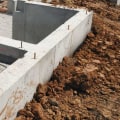After foundation repair, several critical steps and considerations come into play to ensure the long-term stability and health of your home. The immediate aftermath involves a thorough inspection and cleanup process. The repair team will first assess the effectiveness of the repairs, ensuring that the foundation is stable and secure. They may use various tools and techniques to verify that the underlying issues have been adequately addressed. Any debris or leftover materials from the repair process will be cleared away, leaving the site clean and safe for continued use.
One of the primary concerns post-repair is monitoring the repaired areas to ensure they hold up over time. This involves periodic inspections to check for any signs of new cracks, shifts, or other structural issues. Homeowners should keep an eye on their property and report any concerning changes to the repair company. Most reputable foundation repair companies offer warranties on their work, which provides an additional layer of protection and peace of mind. These warranties typically cover any future repairs needed if the initial work does not hold up, ensuring that homeowners are not left with unresolved issues.
In many cases, foundation repairs can cause minor damage to other parts of the home that may need addressing. This can include small cracks in the walls, ceilings, or floors that appear as the foundation settles into its new position. These cosmetic issues are usually easy to fix and should be attended to promptly to maintain the home’s appearance and integrity. Additionally, it’s important to check for any damage to plumbing and electrical systems, as shifts in the foundation can sometimes affect these utilities. Ensuring that all systems are functioning correctly is essential for the overall safety and comfort of the home.
Another important aspect to consider after foundation repair is the landscaping around the home. The repair process can disturb the soil and vegetation, potentially affecting drainage patterns. Proper drainage is crucial for preventing future foundation problems, so it’s vital to restore or improve the landscaping to direct water away from the foundation. This might involve regrading the soil, installing drainage systems, or planting vegetation that helps manage water flow. Maintaining good drainage will help protect the foundation from water damage and prolong the effectiveness of the repairs.
Homeowners should also consider the impact of foundation repair on their home's insulation and energy efficiency. If the foundation repair included sealing cracks and gaps, this could improve the home’s thermal performance by reducing drafts and heat loss. It’s a good idea to reassess the insulation and make any necessary upgrades to ensure that the home remains energy-efficient. This step is particularly important in regions with extreme weather conditions, where maintaining a consistent indoor temperature is essential for comfort and energy savings.
In the context of maintaining a comfortable indoor environment, evaluating and possibly upgrading heating systems may be necessary. For instance, considering central heating options in New Zealand can be a practical step. Central heating systems, such as heat pumps, ducted gas heating, and underfloor heating, can offer efficient and effective solutions for maintaining a warm and comfortable home, particularly if the foundation repairs have led to improved insulation.
Additionally, it’s important to document all repair work and maintain a comprehensive record. This documentation can be invaluable for future reference, whether for routine maintenance, potential resale of the property, or addressing any warranty claims. Keeping detailed records ensures that all stakeholders, including future homeowners, are aware of the repairs undertaken and the condition of the foundation.
Homeowners may also need to reassess their home insurance policies following foundation repair. It’s essential to notify the insurance provider about the repairs and ensure that the policy accurately reflects the current state of the home. Some policies might offer discounts for improved structural integrity, while others may need updates to cover any new potential risks identified during the repair process.
Finally, ongoing maintenance is key to preserving the integrity of the foundation and the home. Regular inspections, proper drainage, and prompt attention to any new issues that arise are crucial for maintaining the stability and safety of the home. By staying proactive and vigilant, homeowners can ensure that their foundation repair investment provides long-lasting benefits and protects their property for years to come.
In conclusion, the period following foundation repair involves a series of important steps to ensure the longevity and effectiveness of the work. From inspections and monitoring to addressing cosmetic issues and enhancing drainage, each action plays a vital role in maintaining the stability of the home. Considering energy efficiency improvements, such as central heating options in New Zealand, can further enhance the comfort and functionality of the home. By taking these measures, homeowners can safeguard their property and enjoy a stable, secure living environment.







